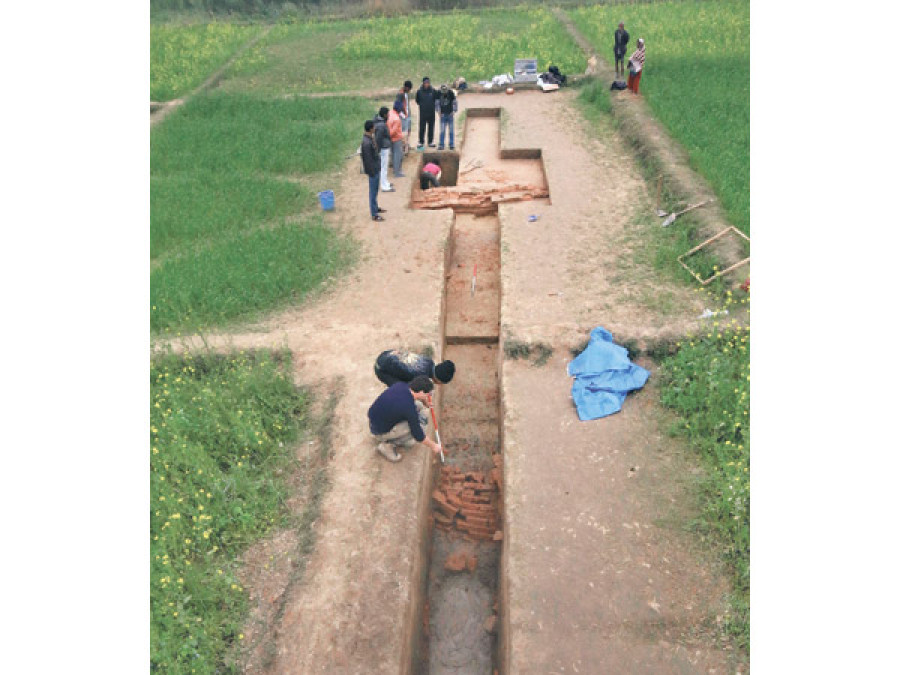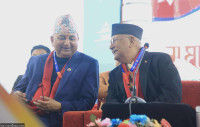Opinion
Unearthing the past
The ongoing Tilaurakot excavation will definitely provide new knowledge on ancient Kapilvastu.
Hari Shrestha
Early excavations
Against the context of the archaeological importance of Tilaurakot, many local and foreign scholars have been exploring and excavating this area since the last decade of the 19th century. The scholar A Fuhrer was among the first people to explore Tilaurakot as a site of archaeological interest in 1896. The first exploration and excavation was conducted by PC Mukherjee from British India in 1899, who clearly highlighted Tilaurakot as the exact site of Kapilvastu, situated in the right position and fulfilling all other conditions. Mukherjee’s fascinating report further attracted the attention of archaeologists and historians, both at home and abroad. Then onwards, the quest for the lost city of Kapilvastu has gradually gained momentum and successive excavations in Tilaurakot have exposed many exciting findings in the form of structural remains of the palace, fortified walls, gateway complex, twin stupas, among others, as evidences that could help discover the capital city of ancient Kapilvastu. The details given by Chinese travelers Fa-Xian (5th century) and Hiuen-Tsiang (7th century) concerning Kapilvastu were quite relevant in reference to the structural remains brought to the surface in the course of excavation at Tilaurakot.
The second excavation in Tilaurakot was conducted jointly by Nepal’s Department of Archaeology and the Archaeological Survey of India in 1961-62. This limited excavation also explored fortified walls of brick and mud, potteries, and terracotta figurines and extensive circulation of coins. Debala Mitra, who was then involved in the excavation from the Archaeological Survey of India side, expressed in clear terms the view that “it should be right and proper to accept Tilaurakot as a city at least as old as the sixth century BC.” Successive excavations in the preceding years, undertaken by the Department of Archaeology in collaboration with the Rissho University of Japan, exposed many remarkable structural remains and artifacts in Tilaurakot that have provided credence-worthy factors for the recognition of Tilaurakot as identical with ancient Kapilvastu.
Babu Krishna Rijal, as the Excavation In-charge of the Department of Archaeology, undertook the responsibility of excavations at Tilaurakot in 1974-75 and worked there for nearly four years. His most remarkable achievement was tracking the chronological sequence of culture, beginning from the painted grey-ware phase to the period of the Kushanas. The cultural remains discovered from the excavation of Tilaurakot established the antiquity of human habitation in this area beginning from the 11th century BC to second/third century AD. The terracotta artifacts, in the form of potteries and male and female figurines with classical ornaments, appeared to be more distinctive and different in design and painting. Systematised trade and organised trade corporations were apparently in existence in the town of Kapilvastu. During the course of each excavation, archaeologists have encountered multiple hoards of punch-marked coins dating from the 5th century BC to the 2nd century AD, which also provided significant clues to attest to the particular site as one where the capital town of Kapilvastu
flourished.
Counter claims
Back in 1970-71, KM Srivastava, an archaeologist from India, declared to have discovered a stupa and a monastery-like structure during the excavation in Piprahawa and Ganwaria of India. He also claimed to have found original caskets inside the stupa and some terracotta seals bearing the legend “mahakapilvastu vikshu sangha”. In the beginning, he rightly introduced the structure as a monastic (vihara) complex whose latest date could be 2nd or 3rd century AD. But after three years, he claimed the same complex as the palace of Suddhodhana and declared Piprahawa as the lost city of Kapilvastu. Because of his self-contradictory arguments, the lack of scientific justification for the findings, the total absence of geo-physical situations, and other concrete evidences, the attempt to identify Piprahawa as Kapilvastu was not able to convince academia involved in the excavation. Hartel, a renowned archaeologist, who carried out intensive research on ancient Buddhist sites, rightly stated that “the majority of scholars all over the world tended to Tilaurakot.”
New facts unfolding
In the last few years, archaeologists and archaeological scientists from the UK have been involved in excavations at Tilaurakot. Before undertaking the real work of excavation, they conducted a geophysical survey at the site. They introduced advanced methods of archaeological geophysics for the first time in Nepal at Lumbini and Tilaurakot, which could record shallow sub-surface features quickly and required only a small team, making it both time and cost effective. The accuracy of such geophysical surveys had already been proved at Lumbini, as archaeologists from Durham University had exposed the structural remains of lumminigame (Lumbini village), which was the legend inscribed in the Ashoka pillar at Lumbini.
Currently, the third phase of excavation is on-going at Tilaurakot and many remarkable findings have been unearthed to date. Many post holes of archaeological significance, pre-Buddha monuments, and the remains of ancient roads, security walls, water wells, meaningful relics and artifacts, multiple hoards of punch-marked coins, among others have been brought to the
surface in course of recent excavations. The detailed study of these material cultures will further unravel many more spectrums of the Kapilvastu civilisation.
After the completion of the excavations at Tilaurakot, a scientific report is expected to come out soon that will definitely provide new knowledge on the heritage of ancient Kapilvastu.
Shrestha is a former associate professor of Archaeology at Tribhuvan University




 8.12°C Kathmandu
8.12°C Kathmandu










